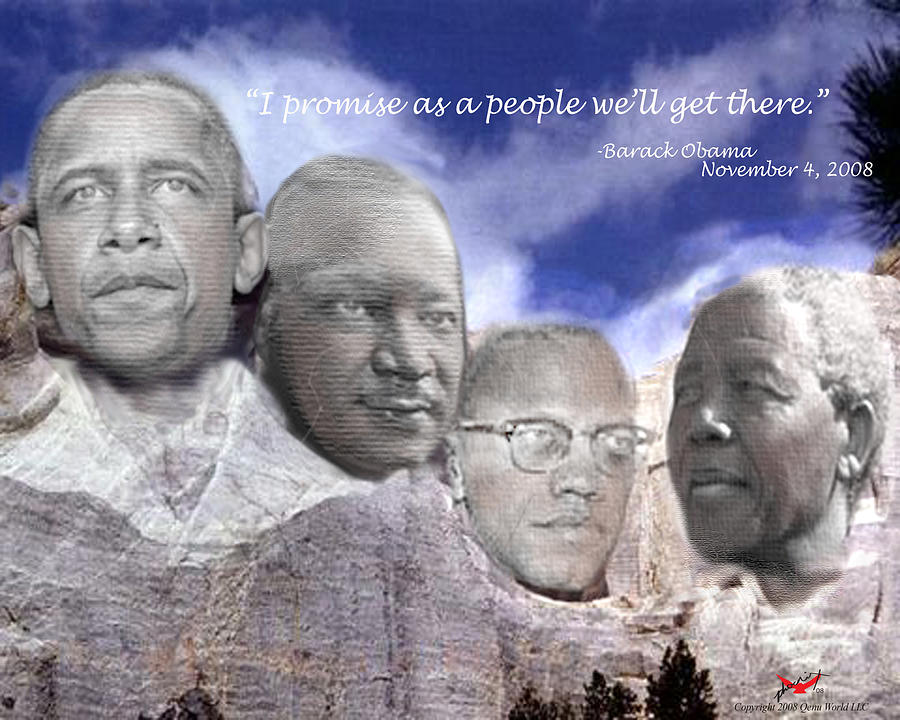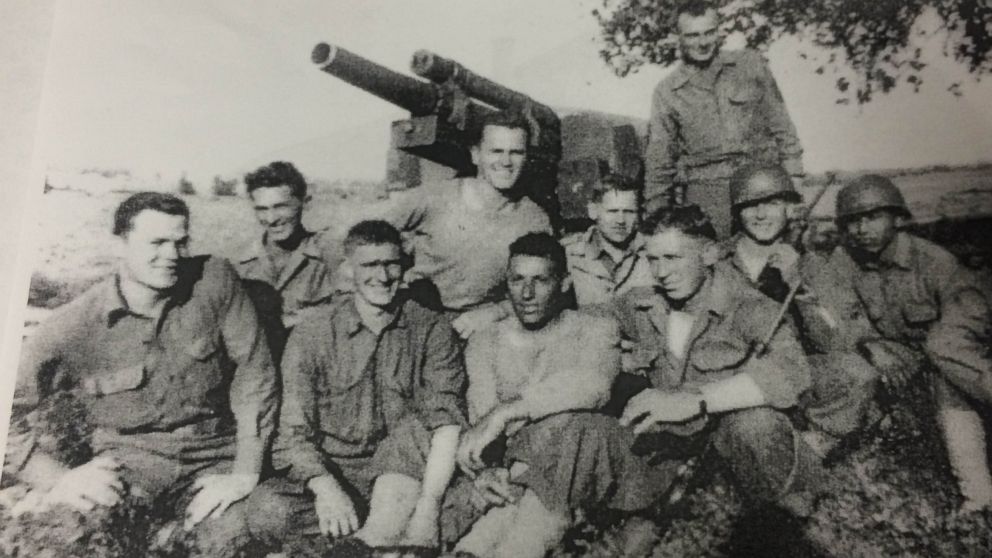
Saturday, April 25, 2020
Week 13 - Intro to the Black Freedom Movement

Monday, April 20, 2020
Week 12 - 1950s America

1950's America focused on the modernization of the country after the second World War. The baby boom and the suburban boom ran simultaneously during this period. Almost as soon as World War II ended, William Levitt, whose “Levittowns” in New York, New Jersey and Pennsylvania, would become the most famous symbols of suburban life in America. People began to buy land on the outskirts of cities and built cheap and modest homes there. The G.I. Bill also cut costs on mortgages for soldiers returning home from battle, which made buying a house cheaper compared to renting an apartment in the city. These houses were ideally designed for young families as they were the majority who lived in them. One huge advance made by the country at this time was the Dwight D. Eisenhower National System of Interstate and Defense Highways. This changed transportation methods in the United States, but affected certain cultural landscapes across the country. Eisenhower believed that with the rise of automobiles, the ‘superhighways’ could connect cities in order to minimize traffic problems. However, the Interstate could not be placed within highly concentrated urban areas because the government would have to buy out civilian properties in order to begin construction in those areas. Rural and lower income surrounding downtown areas were cheaper locations to build these 'beltways' around cities like Houston, Texas. This led to the drastic decrease of urban downtowns and the rise of the economy around these once-rural locations. One of the most important political developments in the country during the 1950's was the Sun Belt. The Sun Belt stretched from the southeastern part of the US all the way across the continent through Texas, Arizona and New Mexico to the West Coast. This opened up many opportunities for businessmen in the United States. The warm winters of the Sun Belt reduced the heating costs for people. The founding of air-conditioning made the hot summers manageable. Numerous amounts of workers were available, with more waiting in Mexico. American industries built state-of-the-art, efficient factories in an attempt to surpass its foreign competition. Most importantly, the Sun Belt states lowered taxes to attract newer sources of business to the area. The Interstate System in the United States is known as one of the most, if not the most innovative form of technology and networking in the United States. These new beltways were either positive or negative changes in cultural and urban landscapes which were influenced by the establishment of the Federal Highway system. The system allowed the United States economy to flourish under the modern way of life, which centered around automobiles and fast travel.
Image information: Picture by Jeremy Woodhouse/Blend Images/Corbis. Source: https://www.wired.com/2016/04/widening-highways-never-fixes-traffic-darnit-texas/
Cox, Wendell, and Jean Love. The best investment a nation ever made: A tribute to the Dwight D. Eisenhower system of interstate and defense highways. DIANE Publishing, 1998.
Saturday, April 11, 2020
Week 11 - The US and World War II

World War II represented a pivotal turning point in world history. All nations around the world were affected by the outcomes of this particular war even after the war had ended. The United States went through the Great Depression from 1929 leading up to the war. The Depression took a huge toll on society because many Americans faced issues with hunger, homelessness, undernourishment, as well as unemployment. In the year 1933, the financial collapse of the government triggered a worldwide depression that affected the economy of the country. President Franklin Delano Roosevelt did his best to help America survive the financial collapse but it would take more than his "New Deal" plan to end the Great Depression. However, by the late 1930s, America’s financial system had regrouped and was more stable compared to other "industrialized" nations. During the global depression, dictators such as Adolf Hitler, Hirohito, and Benito Mussolini rose to power to spread their distinctive forms of government across the world. America was divided on its involvement in the war but the attack on Pearl Harbor forced the country to take action. The United States entered the war against the 'Axis' nations (Germany, Japan, and Italy). The United States joined the war effort to help stop the spread of Nazism and expose its scheme of racial superiority to the world. In achieving this goal, the United States played an integral role in liberating the concentration camps in Europe. At these camps, American soldiers witnessed what horrors the Nazis had accomplished. Thousands of malnourished bodies and bruised limbs of the victims showed that these people had been tortured by the Germans. News was spread and pictures were taken that exposed the evidence of the Nazi-ran camps to the world and everyone was able to see what was happening in the camps. In the end, the United States managed to stop the spread of the “superior race disease” and the Allies won the war over the Axis Powers. This was a win for democracy. However, this war took the lives of around sixty million soldiers and civilians. During the war, soldiers became tired and hungry from sleepless nights and endless combat. The destruction from the war left major cities in Asia and Europe burned to the ground while the United States was left in a better position compared to the other nations President Roosevelt suggested that Americans help contribute towards the war effort and to not discriminate against women or African Americans in their employment practices. This allowed for women to enter the workplace for the first time. The war also restricted civil liberties at home, mostly for Japanese Americans. These people were put into internment camps with the the fear that they might engage in spying and sabotage the United States in support of the enemy. World War II also brought economic recovery to the United States far beyond what FDR's New Deal could bring. It was a time of prosperity for the United States. Through the GI bill, returning Americans soldiers were able to attend college and purchase homes with low mortgages. Many of these soldiers started their own families due to this, leading to the baby boom era. The post-war aftermath increased the foreign demand for American exports. As the other nations were rebuilding after the war, the needs of these nations could only be met by the United States. World War II, in a nutshell, was a important point in history which put the American economy back on its feet. WWII resulted in the creation of the United Nations, which was was created to prevent another world war. The United States joined the war effort for a good reason and the Allied victory set up the United States for years of prosperity.
Image information: Picture called "Eligio Ramos is pictured here with his platoon during World War II." by The Ramos Family. Source: https://abcnews.go.com/US/wallet-left-70-years-ago-austria-world-war/story?id=32900470
Brown, Louis. Technical and Military Imperatives: A Radar History of World War 2. Crc Press, 1999.
Brown, Louis. Technical and Military Imperatives: A Radar History of World War 2. Crc Press, 1999.
Saturday, April 4, 2020
Week 10-The Great Depression and the New Deal

Men by the thousands are lined up desperately waiting for work so they could make money to provide for their families. People are begging for food to eat in order to survive through tough times. This was the United States of America during this particular time of struggle. Jobs were relatively easy to come by when the country wasn’t difficult, but the country was experiencing an economic failure known as the Great Depression. Before the Great Depression, our country went through what some considered a “Golden Age”. Also known as the Roaring Twenties, the American economy and stock market were at its peak. The Roaring Twenties was an era of peace and prosperity and the United States was also wealthier than it had ever been. When people were spending all of their money on luxuries and investing just for fun, the stock market crashed on October 29, 1929. The crash sent the country into the Great Depression. Banks, stores, and factories closed and left millions of Americans unemployed and homeless. Many Americans became dependent on the government to provide them with food and job opportunities. During the Great Depression, the unemployment rate increased at rapid speeds. This left millions of Americans unemployed with no jobs. Even the Americans who were fortunate enough to have jobs received drastic pay cuts as well. Families neglected medical and dental care just to save money. The Great Depression is one of the largest struggles in American history that no one ever wants to see happen again. Both President Hoover and President Roosevelt made their best attempts to help the people and dig the nation out of its recession. During the Great Depression, President Hoover called business leaders and talked them into keeping wages high, instead of cutting them. “Hoover contacted churches, charities, and local governments to help out the poor as the economic conditions insisted. As the nation continued on a downward spiral, Americans were unsatisfied because Hoover wasn’t doing a good job as president and they believed a change had to be made. However during the election of 1932, presidential candidate Franklin Roosevelt promised that he would use the federal government to create jobs and in an effort to regulate the high levels of unemployment and to prevent another recession from happening. He promised a “new deal” for Americans. After hearing his pledge, the decision was easy for voters after seeing what a poor job Hoover did as President and FDR became president soon after. The New Deal did not necessarily end the Great Depression but it only provided relief instead of recovery for the state of the economy. The New Deal did bring jobs back to help the unemployment rate drop, however it didn’t give enough jobs back to end the Depression. World War II created new jobs for Americans because the country needed help making supplies for the war. These jobs ultimately helped end the Great Depression. Most people had jobs again and were bringing sufficient incomes back into their households. They began saving their money wisely as a result. FDR's New Deal did a better job in helping America recuperate from the mess that the Great Depression made opposed to the plan Herbert Hoover had in place. The deal succeeded in preventing a future widespread economic collapse.
Image information: Picture called "What America looked like during the Great Depression" by Dorothea Lange. Source: https://www.thetelegraph.com/lifestyle/article/What-America-looked-like-during-the-Great-15068691.php#photo-19057786
Bell, Walter. “The New Deal: A Success?: The New Deal Did Not End the Great Depression.” American History.ABC-CLIO, 2013. Web. 4 Jan. 2013.
Subscribe to:
Comments (Atom)